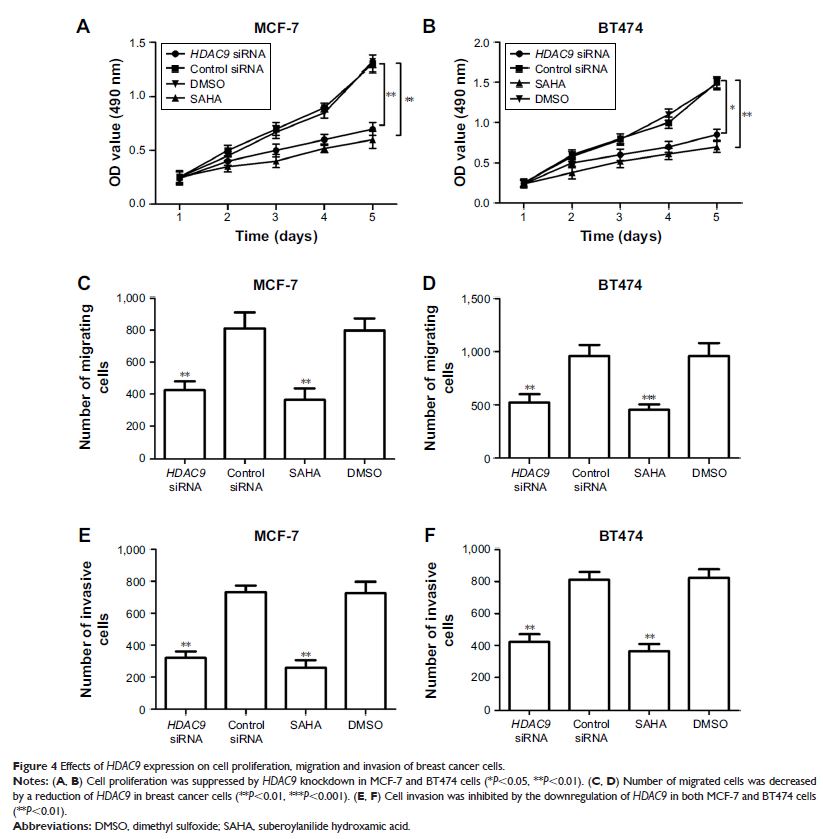108985
论文已发表
注册即可获取德孚的最新动态
IF 收录期刊
- 3.4 Breast Cancer (Dove Med Press)
- 3.2 Clin Epidemiol
- 2.6 Cancer Manag Res
- 2.9 Infect Drug Resist
- 3.7 Clin Interv Aging
- 5.1 Drug Des Dev Ther
- 3.1 Int J Chronic Obstr
- 6.6 Int J Nanomed
- 2.6 Int J Women's Health
- 2.9 Neuropsych Dis Treat
- 2.8 OncoTargets Ther
- 2.0 Patient Prefer Adher
- 2.2 Ther Clin Risk Manag
- 2.5 J Pain Res
- 3.0 Diabet Metab Synd Ob
- 3.2 Psychol Res Behav Ma
- 3.4 Nat Sci Sleep
- 1.8 Pharmgenomics Pers Med
- 2.0 Risk Manag Healthc Policy
- 4.1 J Inflamm Res
- 2.0 Int J Gen Med
- 3.4 J Hepatocell Carcinoma
- 3.0 J Asthma Allergy
- 2.2 Clin Cosmet Investig Dermatol
- 2.4 J Multidiscip Healthc

HDAC9 的过表达与中国女性乳腺癌预后不良和肿瘤进展有关
Authors Huang Y, Jian W, Zhao J, Wang G
Received 4 February 2018
Accepted for publication 1 March 2018
Published 17 April 2018 Volume 2018:11 Pages 2177—2184
DOI https://doi.org/10.2147/OTT.S164583
Checked for plagiarism Yes
Review by Single-blind
Peer reviewers approved by Dr Justinn Cochran
Peer reviewer comments 2
Editor who approved publication: Dr Carlos Vigil Gonzales
Background: Breast
cancer represents a serious health issue among females. HDAC9 has been identified as
an oncogene in human cancers. This study sought to assess the prognostic value
and the biologic function of HDAC9 in
breast cancer patients.
Methods: Expression of HDAC9 in
breast cancer tissues and cells was evaluated by quantitative real-time
polymerase chain reaction. Kaplan–Meier survival analysis and Cox regression
assay were conducted to explore the prognostic significance of HDAC9 . Cell experiments were
performed to investigate the effects of HDAC9 on the
biologic behaviors of breast cancer cells.
Results: Expression of HDAC9 was
significantly upregulated in both cancerous tissues and cells compared with the
normal controls (all P <0.05).
Overexpression of HDAC9 was
correlated with lymph node metastasis (P =0.021) and TNM
stage (P =0.004). Patients with high HDAC9 had poor overall
survival compared to those with low levels of HDAC9 (log-rank P <0.05). Elevated HDAC9 was found to be an
independent prognostic factor for the patients (hazard ratio=2.996, 95%
CI=1.611–5.572, P =0.001). According
to the cell experiments, tumor cell proliferation, migration and invasion were
suppressed by knockdown of HDAC9 .
Conclusion: All data demonstrated that overexpression of HDAC9 serves as a prognostic
biomarker and may be involved in the tumor progression of breast cancer.
Keywords: HDAC9 , prognosis, progression,
breast cancer
